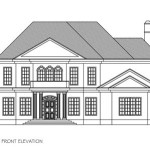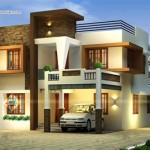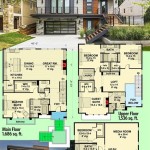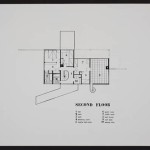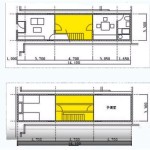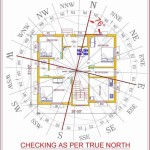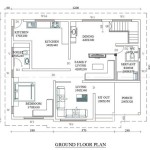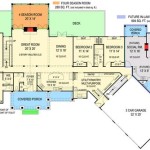Non-Mobile Tiny House Plans: Designing for Permanence
The tiny house movement has gained significant momentum, offering a compelling alternative to traditional housing. While mobile tiny houses on wheels remain a popular choice, non-mobile tiny houses, designed to be permanently fixed to a foundation, provide a distinct set of advantages. These plans cater to individuals seeking a more stationary lifestyle and a greater sense of integration with their surroundings. This article explores the key aspects of non-mobile tiny house plans, highlighting their benefits, considerations, and design principles.
Benefits of Non-Mobile Tiny House Plans
Non-mobile tiny house plans offer numerous benefits that distinguish them from their mobile counterparts. These plans can be tailored to specific site conditions and local building codes, optimizing their functionality and aesthetics. The absence of wheels and a dedicated towing mechanism allows for more efficient use of space, reducing the overall footprint and potential for interior constraints. Furthermore, non-mobile houses can be designed with permanent features, including decks, porches, and gardens, fostering a deeper connection with the surrounding landscape.
Another significant advantage of non-mobile tiny houses is their potential for cost savings. By eliminating the need for a trailer chassis and the associated mobile components, construction costs can be reduced. This approach also simplifies the building process, often allowing for more DIY involvement and potential for personalized customization. Furthermore, permanent foundations offer greater stability and resilience against weather and seismic events, providing long-term peace of mind.
Key Considerations for Non-Mobile Tiny House Plans
While non-mobile tiny houses present distinct advantages, several considerations are crucial when embarking on this design journey. First, understanding local building codes and zoning regulations is paramount. These regulations dictate the specific requirements for foundations, structural integrity, and other aspects of the building process. Compliance with these regulations ensures legal approval and a safe and sustainable dwelling.
Next, site selection plays a pivotal role in determining the overall design and functionality of the tiny house. Factors like the terrain, access to utilities, and surrounding environment should be carefully assessed. The site's orientation with respect to sunlight and prevailing winds can significantly influence the design of windows, solar panels, and other energy-efficient elements.
Finally, careful planning is essential for maximizing space and functionality in a non-mobile tiny house. The layout should prioritize efficient use of every square foot, incorporating clever design features like built-in furniture, multi-functional spaces, and ample storage solutions. This approach ensures that the tiny living experience is both comfortable and practical.
Design Principles for Non-Mobile Tiny Houses
Designing a non-mobile tiny house requires a keen eye for detail and a commitment to maximizing every inch of space. These principles can guide the design process: *
Vertical Space:
Utilizing vertical space is crucial in tiny house design. Consider incorporating loft spaces for sleeping areas, maximizing headroom by strategically placing beams and trusses, and utilizing wall-mounted shelves and cabinets for storage. *Multi-Functional Spaces:
Optimizing space necessitates adopting a multi-functional approach. Design areas that serve multiple purposes, such as a living room that doubles as a guest room or a kitchen island that functions as a dining table. *Natural Light:
Incorporating ample natural light is vital for creating a spacious and inviting atmosphere. Maximize window placement to allow natural light to permeate the interior. *Energy Efficiency:
Sustainable design considerations are paramount for non-mobile tiny houses. prioritize energy efficiency through features like insulated walls and roofs, solar panels, and efficient appliances. *Outdoor Living:
Extend the living space beyond the walls of the tiny house by incorporating decks, patios, and gardens. These areas offer opportunities for relaxation, entertainment, and a greater connection with nature.
27 Adorable Free Tiny House Floor Plans Craft Mart

Tiny House Floor Plans 32 Long Home On Wheels Design

Tiny House Plans That Are Big On Style Houseplans Blog Com

Our Tiny Home Models Ljm Homes

27 Adorable Free Tiny House Floor Plans Craft Mart
:max_bytes(150000):strip_icc()/ana-tiny-house-58f8eb933df78ca1597b7980.jpg?strip=all)
4 Free Diy Plans For Building A Tiny House

27 Adorable Free Tiny House Floor Plans Craft Mart

Tiny House Plans Homes

My Scandinavian Home A Beautifully Crafted Tiny House On Wheels

Tiny House Archieven Eppinga Nl

